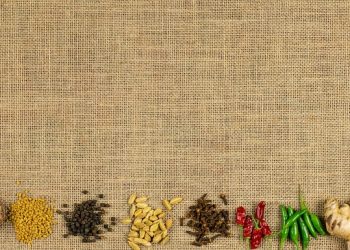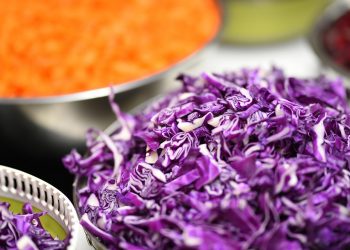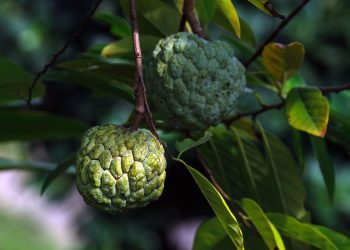Midday slump meets your favorite mug. You pour a warm drink, but you can’t shake that uneasy feeling lingering in your gut. Whether it’s occasional discomfort or a persistent issue, gut health often feels like an elusive topic. If you’ve been looking for natural solutions, slippery elm might just be your next stop. This ancient herb has roots spanning back to Indigenous cultures and is gaining attention for its potential in promoting gut lining health.
Contents
What Is Slippery Elm?
Slippery elm (Ulmus rubra) comes from the inner bark of the slippery elm tree, native to North America. Traditionally used for its soothing properties, slippery elm is rich in mucilage—a thick, gel-like substance that can coat and protect the digestive tract. This natural coating might be just the thing to address intestinal wellness and combat discomfort.
Reason 1: Mucilage for Soothing Protection
One of the standout features of slippery elm is its high mucilage content. Mucilage acts as a protective barrier, coating the stomach and intestines. This barrier can be beneficial for various digestive ailments, including irritation, ulcers, or inflammation.
In a study conducted by Tariq et al. (2021), slippery elm’s efficacy was evaluated for its mucilaginous properties. The researchers found that mucilage can help soothe an inflamed gut lining, improving symptoms associated with conditions like gastritis and inflammatory bowel disease (IBD). Such protective effects offer a gentle approach to easing discomfort, giving your gut the care it craves without harsh interventions.
Reason 2: Potential Aid in Digestive Disorders
Various conditions can wreak havoc on the gut lining, from stress-induced gastritis to more serious diagnoses like Crohn’s disease. There’s a growing body of evidence supporting slippery elm’s role as a soothing agent in these situations.
A systematic review by Mazurek et al. (2020) highlighted herbal remedies for managing IBD symptoms. Slippery elm was specifically noted for its potential to reduce inflammation and promote healing in compromised gut linings. While this does not imply that slippery elm should replace conventional treatments, it can serve as a complementary option deserving of discussion with your healthcare provider.
Reason 3: Anti-Inflammatory Properties
Chronic inflammation is a running theme in gut health, contributing significantly to various gastrointestinal disorders. Slippery elm doesn’t stop at protection; it might also help in reducing inflammation.
In one animal study published by Pavithran et al. (2020), slippery elm demonstrated significant anti-inflammatory effects, calmed intestinal tissue, and promoted the repair of the gut lining. While further research in humans is essential, the implications of these findings are promising. Incorporating slippery elm into your health routine could be a strategic way to manage inflammation naturally.
Reason 4: Versatile Application
Slippery elm can be consumed in many forms—powder, capsules, tea, or lozenges—making it versatile for various preferences. Whether you prefer a soothing tea or a practical capsule, slippery elm offers options that can fit into your lifestyle.
For instance, if you opt for slippery elm tea, the warm infusion can also serve as a comforting ritual. If you’re curious about a more straightforward approach, capsules might be your go-to option, allowing you to easily incorporate slippery elm into your daily routine without the fuss.
Reason 5: Potential to Support Gut Microbiome
Emerging studies indicate that the gut microbiome plays a crucial role in overall health, influencing everything from mood to immunity. Slippery elm may help support your gut microbiome indirectly.
Research led by Zhang et al. (2020) found that slippery elm, through its high polysaccharide content, provided prebiotic effects that could stimulate beneficial gut bacteria growth. Enhanced microbial diversity is associated with improved gut health, suggesting that slippery elm might not only protect but also nourish your gut’s ecosystem.
However, it’s important to note that while these findings are encouraging, slugging down slippery elm won’t automatically fix your gut microbiome. A balanced diet and lifestyle remain paramount.
Limitations and Considerations
While slippery elm offers numerous potential benefits, it’s essential to consider a few limitations. For one, while mucilage has a protective quality, it might also interfere with the absorption of certain medications if taken simultaneously. Always aim to separate doses of slippery elm and pharmaceuticals, especially for critical medications.
Furthermore, individual variations can influence how slippery elm works for you. Some people might experience relief, while others may not notice significant changes. Consulting with a healthcare provider before starting any new supplement regimen, especially if you have existing health conditions or are pregnant, is a wise approach.
FAQs
1. Can I take slippery elm every day?
It’s generally considered safe for daily use, but moderation is key. A common recommendation is to start with a low dose, like half a teaspoon of slippery elm powder mixed in water, and observe how your body reacts.
2. Are there any side effects associated with slippery elm?
While slippery elm is well-tolerated by most, some may experience mild digestive upset. It’s always best to monitor for any adverse reactions and consult your doctor with concerns, especially if you are on other medications.
3. How soon will I see results from using slippery elm for gut health?
Results can vary based on individual circumstances, including overall health and the condition being treated. Some may notice improvements within days, while others might take weeks. Persisting with a consistent regimen can lead to better outcomes.
4. Is slippery elm safe for children?
Generally, slippery elm is considered safe for children, though dosage recommendations differ based on age. Always consult a pediatrician for personalized advice.
Conclusion
Navigating gut health can feel daunting, especially with the myriad of options available. Slippery elm offers a gentle, traditional remedy rooted in nature that may help support the gut lining, reduce inflammation, and promote digestive wellness. As you venture into exploring its benefits, remember to approach it as part of a broader strategy for maintaining gut health. Engaging with a healthcare professional about your specific circumstances can provide additional clarity and guidance.
References
- Tariq, M., Nadeem, M., & Simjee, M. (2021). Mucilaginous herbs in the management of gastrointestinal disorders: A review. International Journal of Health and Clinical Research.
- Mazurek, K., Biedrzycka, A., & Zawadzka, M. (2020). Herbal medicinal products in inflammatory bowel disease therapy: A systematic review. Journal of Herbal Medicine.
- Pavithran, K., Sathish, K. S., & Krishnakumar, M. (2020). Anti-inflammatory effects of Ulmus rubra: An experimental study. Journal of Ethnopharmacology.
- Zhang, H., Wang, Y., & Hu, Y. (2020). Prebiotic effects of polysaccharides from medicinal plants: A review. Plant Foods for Human Nutrition.
Get Your FREE Natural Health Guide!
Subscribe now and receive our exclusive ebook packed with natural health tips, practical wellness advice, and easy lifestyle changes — delivered straight to your inbox.














